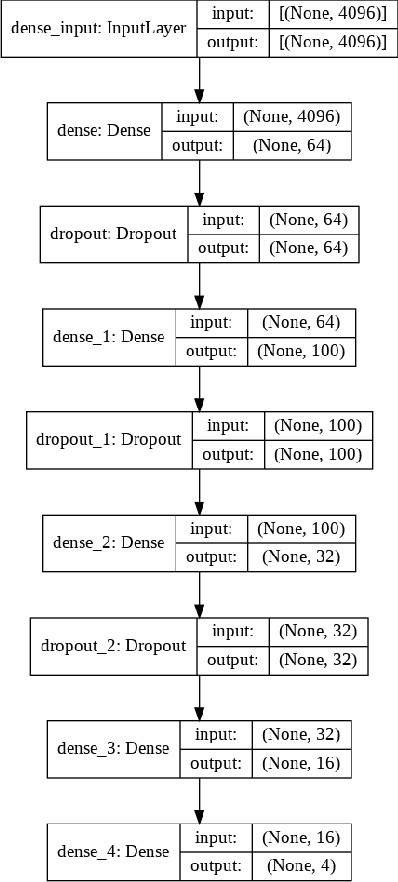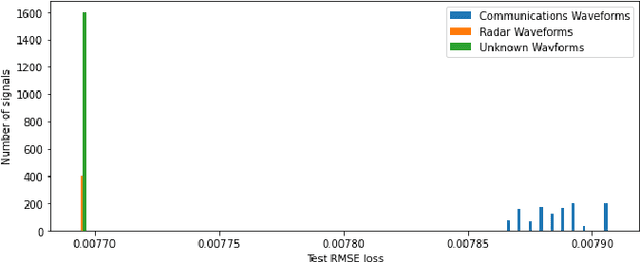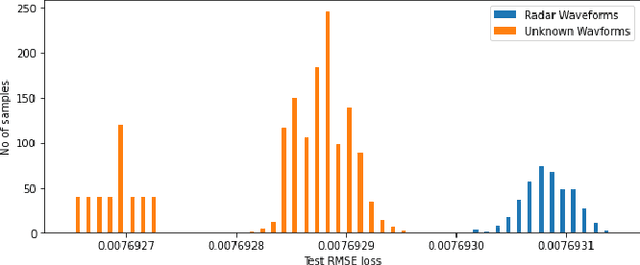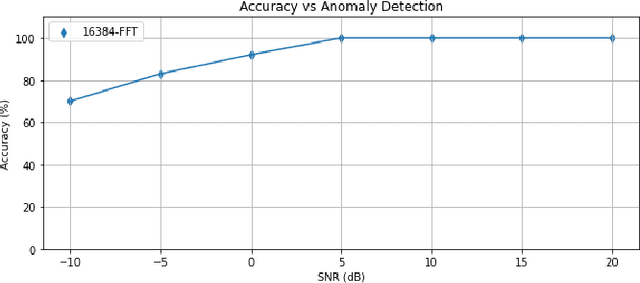C. Tanner Fredieu
Image-based Detection of Segment Misalignment in Multi-mirror Satellites using Transfer Learning
Jul 30, 2024Abstract:In this paper, we introduce a system based on transfer learning for detecting segment misalignment in multimirror satellites, such as future CubeSat designs and the James Webb Space Telescope (JWST), using image-based methods. When a mirror segment becomes misaligned due to various environmental factors, such as space debris, the images can become distorted with a shifted copy of itself called a "ghost image". To detect whether segments are misaligned, we use pre-trained, large-scale image models trained on the Fast Fourier Transform (FFT) of patches of satellite images in grayscale. Multi-mirror designs can use any arbitrary number of mirrors. For our purposes, the tests were performed on simulated CubeSats with 4, 6, and 8 segments. For system design, we took this into account when we want to know when a satellite has a misaligned segment and how many segments are misaligned. The intensity of the ghost image is directly proportional to the number of segments misaligned. Models trained for intensity classification attempted to classify N-1 segments. Across eight classes, binary models were able to achieve a classification accuracy of 98.75%, and models for intensity classification were able to achieve an accuracy of 98.05%.
Investigating Continuous Learning in Spiking Neural Networks
Oct 09, 2023Abstract:In this paper, the use of third-generation machine learning, also known as spiking neural network architecture, for continuous learning was investigated and compared to conventional models. The experimentation was divided into three separate phases. The first phase focused on training the conventional models via transfer learning. The second phase trains a Nengo model from their library. Lastly, each conventional model is converted into a spiking neural network and trained. Initial results from phase 1 are inline with known knowledge about continuous learning within current machine learning literature. All models were able to correctly identify the current classes, but they would immediately see a sharp performance drop in previous classes due to catastrophic forgetting. However, the SNN models were able to retain some information about previous classes. Although many of the previous classes were still identified as the current trained classes, the output probabilities showed a higher than normal value to the actual class. This indicates that the SNN models do have potential to overcome catastrophic forgetting but much work is still needed.
Open-set Classification of Common Waveforms Using A Deep Feed-forward Network and Binary Isolation Forest Models
Oct 01, 2021



Abstract:In this paper, we examine the use of a deep multi-layer perceptron architecture to classify received signals as one of seven common waveforms, single carrier (SC), single-carrier frequency division multiple access (SC-FDMA), orthogonal frequency division multiplexing (OFDM), linear frequency modulation (LFM), amplitude modulation (AM), frequency modulation (FM), and phase-coded pulse modulation used in communication and radar networks. Synchronization of the signals is not needed as we assume there is an unknown and uncompensated time and frequency offset. The classifier is open-set meaning it assumes unknown waveforms may appear. Isolation forest (IF) models acting as binary classifiers are used for each known signal class to perform detection of possible unknown signals. This is accomplished using the 32-length feature vector from a dense layer as input to the IF models. The classifier and IF models work together to monitor the spectrum and identify waveforms along with detecting unknown waveforms. Results showed the classifier had 100% classification rate above 0 dB with an accuracy of 83.2% and 94.7% at -10 dB and -5 dB, respectively, with signal impairments present. Results for the IF models showed an overall accuracy of 98% when detecting known and unknown signals with signal impairments present. IF models were able to reject all unknown signals while signals similar to known signals were able to pass through 2% of the time due to the contamination rate used during training. Overall, the entire system can classify correctly in an open-set mode with 98% accuracy at SNR greater than 0 dB.
Classification of Common Waveforms Including a Watchdog for Unknown Signals
Aug 16, 2021



Abstract:In this paper, we examine the use of a deep multi-layer perceptron model architecture to classify received signal samples as coming from one of four common waveforms, Single Carrier (SC), Single-Carrier Frequency Division Multiple Access (SC-FDMA), Orthogonal Frequency Division Multiplexing (OFDM), and Linear Frequency Modulation (LFM), used in communication and radar networks. Synchronization of the signals is not needed as we assume there is an unknown and uncompensated time and frequency offset. An autoencoder with a deep CNN architecture is also examined to create a new fifth classification category of an unknown waveform type. This is accomplished by calculating a minimum and maximum threshold values from the root mean square error (RMSE) of the radar and communication waveforms. The classifier and autoencoder work together to monitor a spectrum area to identify the common waveforms inside the area of operation along with detecting unknown waveforms. Results from testing showed the classifier had 100\% classification rate above 0 dB with accuracy of 83.2\% and 94.7\% at -10 dB and -5 dB, respectively, with signal impairments present. Results for the anomaly detector showed 85.3\% accuracy at 0 dB with 100\% at SNR greater than 0 dB with signal impairments present when using a high-value Fast Fourier Transform (FFT) size. Accurate detection rates decline as additional noise is introduced to the signals, with 78.1\% at -5 dB and 56.5\% at -10 dB. However, these low rates seen can be potentially mitigated by using even higher FFT sizes also shown in our results.
 Add to Chrome
Add to Chrome Add to Firefox
Add to Firefox Add to Edge
Add to Edge